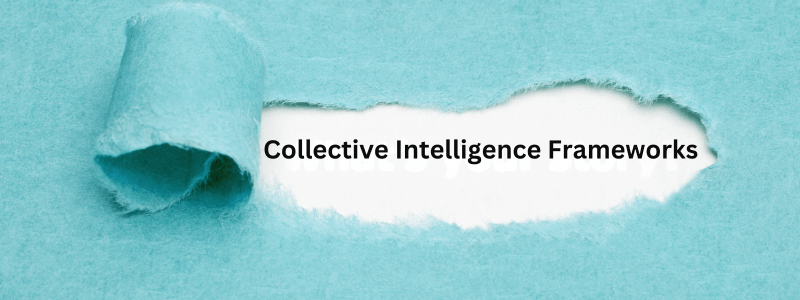
Ever wondered how a flock of birds can fly in perfect harmony or how Wikipedia has grown into an endless source of knowledge? The answer lies in collective intelligence. This concept refers to the ability of a group to outperform individual experts by harnessing their collective wisdom, insights, and skills. In today’s fast-paced tech world, tapping into collective intelligence frameworks is becoming increasingly important, offering unprecedented opportunities for innovation and problem-solving.
The Evolution of Collective Intelligence
Historical Background
Collective intelligence isn’t a new idea. In fact, it’s been around since ancient times. Think about ancient Greek democracy or the medieval guilds where craftsmen shared knowledge. However, the digital age has turbocharged this concept, making it more accessible and powerful than ever before.
Early Examples
From the early days of open-source software development to the rise of social media platforms, collective intelligence has been at the forefront of many tech innovations. Platforms like Linux and Wikipedia are prime examples where the power of the crowd has created something far greater than any individual effort could have achieved.
How Collective Intelligence Works
Basic Principles
At its core, collective intelligence operates on the principle that the whole is greater than the sum of its parts. It relies on the diversity of thoughts, independence of individuals, decentralization, and aggregation of opinions.
Technology and Tools Involved
The technology driving collective intelligence includes everything from simple discussion forums to advanced AI algorithms. Tools like crowdsourcing platforms, collaborative software, and data analytics play a crucial role in gathering, processing, and utilizing collective knowledge.
Types of Collective Intelligence Frameworks
Crowdsourcing
Crowdsourcing involves obtaining input or services from a large number of people, typically from an online community. It’s used in everything from solving complex scientific problems to designing logos.
Swarm Intelligence
Inspired by the behavior of social insects like ants and bees, swarm intelligence focuses on the collective behavior of decentralized, self-organized systems. It’s used in robotics, optimization problems, and more.
Collaborative Platforms
Platforms like Slack, and Google Workspace facilitate real-time collaboration and information sharing among team members, enhancing collective intelligence within organizations.
Applications in Various Industries
Healthcare
In healthcare, collective intelligence is revolutionizing diagnostics and treatment. Platforms that aggregate medical data and patient feedback can lead to faster, more accurate diagnoses and personalized treatment plans.
Finance
In finance, collective intelligence helps predict market trends and make investment decisions. Platforms like QuantConnect allow developers to share and collaborate on trading algorithms.
Education
Educational platforms like Khan Academy and Coursera leverage collective intelligence to provide high-quality learning resources accessible to anyone, anywhere.
Entertainment
In entertainment, collective intelligence is used to gauge audience preferences and create content that resonates with a wide audience. Platforms like Netflix use viewer data to recommend shows and movies.
Collective Intelligence in Business
Enhancing Decision Making
Businesses use collective intelligence to make more informed decisions. By tapping into the collective wisdom of employees, customers, and partners, companies can innovate and adapt more quickly.
Innovation and R&D
In research and development, collective intelligence accelerates innovation. Companies like IBM and Google use open innovation platforms to gather ideas from a global talent pool.
Technologies Powering Collective Intelligence
AI and Machine Learning
AI and machine learning algorithms analyze vast amounts of data, identifying patterns and insights that humans might miss. These technologies enhance the ability to process and leverage collective knowledge.
Blockchain
Blockchain ensures transparency and security in collective intelligence frameworks by providing a decentralized and immutable record of transactions and contributions.
Big Data Analytics
Big data analytics processes large datasets, uncovering trends and patterns that can inform decision-making and strategy development.
Challenges and Limitations
Ethical Concerns
Ethical concerns include data privacy, consent, and the potential misuse of information. Ensuring transparency and ethical standards is crucial.
Data Privacy Issues
Protecting the privacy of individuals contributing to collective intelligence platforms is a significant challenge that requires robust security measures.
Technical Challenges
Technical challenges include data integration, system interoperability, and maintaining the quality and accuracy of the aggregated information.
Future Trends
Emerging Technologies
Emerging technologies like quantum computing and edge computing hold promise for enhancing collective intelligence by providing faster processing and more efficient data handling.
Predictions for the Next Decade
Over the next decade, we can expect collective intelligence to become even more integrated into daily life, driving innovation across all sectors.
The Role of Human-Machine Collaboration
Enhancing Human Capabilities
Human-machine collaboration amplifies human capabilities, combining the creativity and intuition of humans with the computational power and data-processing abilities of machines.
Examples of Successful Collaborations
Examples include AI-assisted medical diagnostics, where doctors work alongside AI to diagnose diseases more accurately and efficiently.
Building a Collective Intelligence Framework
Key Steps and Considerations
Key steps include defining clear goals, choosing the right tools, fostering a collaborative culture, and ensuring data security and privacy.
Best Practices
Best practices involve continuous learning, adapting to feedback, and maintaining transparency and ethical standards.
The Impact on Society

Social Implications
Collective intelligence has the potential to democratize knowledge and innovation, giving more people a voice in decision-making processes.
Economic Benefits
Economic benefits include increased efficiency, reduced costs, and the creation of new markets and opportunities.
Conclusion
Collective intelligence frameworks represent the future of tech, offering limitless possibilities for innovation, problem-solving, and collaboration. By harnessing the power of the collective, we can achieve greater things than we ever could alone.
FAQs
1. What is collective intelligence?
Collective intelligence is the enhanced capacity of a group to solve problems and make decisions by pooling their knowledge, insights, and skills.
2. How does collective intelligence differ from individual intelligence?
While individual intelligence relies on the capabilities of a single person, collective intelligence leverages the combined knowledge and skills of many individuals.
3. What are some real-world examples of collective intelligence?
Examples include Wikipedia, open-source software projects, and crowd-sourced scientific research like the Galaxy Zoo project.
4. What are the benefits of using collective intelligence frameworks?
Benefits include improved decision-making, faster innovation, and the ability to solve complex problems more efficiently.
5. How can businesses implement collective intelligence frameworks?
Businesses can implement collective intelligence frameworks by fostering a collaborative culture, using the right tools and technologies, and ensuring ethical and transparent practices.
For a deeper dive into how artificial intelligence is shaping future technological advancements, explore our article on IS ARTIFICIAL INTELLIGENCE THE FUTURE OF TECH INNOVATION?
